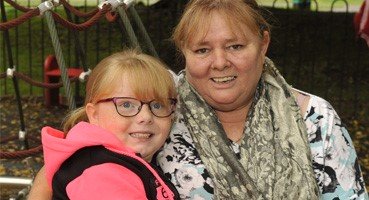On 19th September, Euro-ataxia hosted its first webinar on gene therapy as part of a new series with Ataxia UK. 70 audience members attended live, and 70 watched the recording. The webinar was presented by Dr Federica Pilotto of the Neurodegenerative Disease Laboratory, Université Claude Bernard Lyon 1.

This webinar was organised as part of TREAT-ARCA, a platform for accelerating preclinical discovery and validation of molecular targets in autosomal recessive cerebellar ataxias (ARCAs). The TREAT-ARCA project is a global effort, being led by Dr Hélène Puccio from Université de Lyon, and involves research partners from Germany, Canada, and Italy. German patient group DHAG, Euro-ataxia (with support from Ataxia UK), and the Ataxia Charlevoix-Saguenay Foundation (based in Montréal) are representing patients on this project. The project is funded by the European Joint Programme for Rare Diseases. Gene therapies are a part of the TREAT-ARCA project. Those with recessive inherited ataxias receive a mutated copy of the gene from both their mother and father.
“Imagine your genes are like recipes for food (the protein). Mutations are like mistakes in that recipe, for example when an ingredient is removed (deletion) or doubled (duplication). This is how gene therapy works, by a) decreasing the amount of disease proteins, b) increasing the number of functional proteins or c) adding a new or modified protein”.
To ensure gene therapies are delivered properly, they must be carefully packaged, for example inside of a virus. Viruses can be programmed to enter specific cells, making viral gene therapies very effective. Another method of gene therapy is genome editing. Your genome is all your genes. Genome editing uses a bacterial enzyme called Cas9 to cut out a mutated gene to replace or modify it. A final method of gene therapy is using synthetic sections of DNA called antisense oligonucleotides. These bind to faulty genes and degrade or alter them.
“When considering whether to use gene therapies for conditions, we need to ask some important questions. 1) When is the right time to give the therapy, e.g., before or after symptoms? 2) Is the right therapy being used for the type of cells being targeted? And 3) Can the therapy reach a target without causing unintended damage to other genes or being attacked by the immune system.”
There have been many examples of successful preclinical studies for gene therapies. For example, gene therapies in ataxias are currently being tested to slow heart cell degeneration in those with Friedreich’s Ataxia. Importantly, in Friedreich’s Ataxia (FA), gene therapy is currently being tested in a trial with people with FA. You can read more about it here.
If you have ideas for topics for upcoming webinars, please send them to research@ataxia.org.uk.
Watch the video here.







